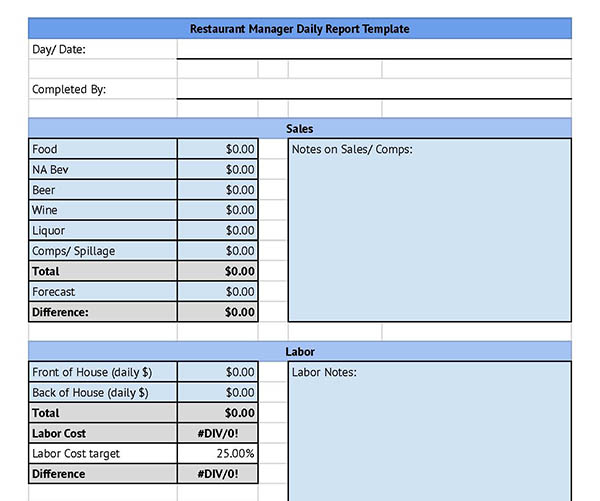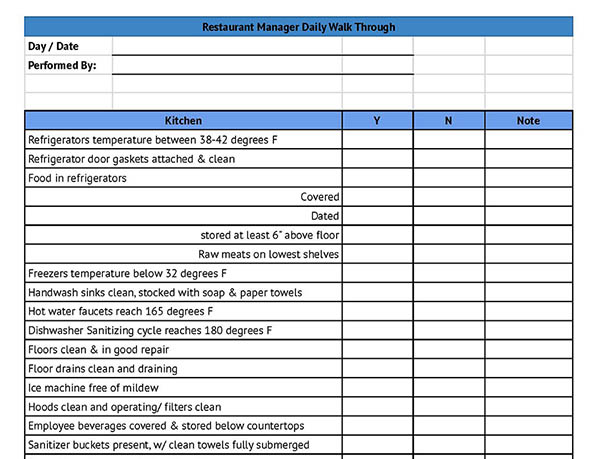Running a restaurant can be an incredibly rewarding and profitable venture, but it’s not without its challenges. In order to succeed in the highly competitive food industry, restaurant owners must have a strong understanding of the basics of restaurant management. From creating a menu and hiring staff to managing finances and ensuring customer satisfaction, there are many aspects of restaurant management that require careful attention.
In this blog post, we will explore the fundamentals of restaurant management in six easy-to-follow steps. Whether you’re a first-time restaurant owner or a seasoned pro looking to brush up on your skills, this guide will provide you with the knowledge and tools necessary to run a successful restaurant.
First, we’ll discuss the importance of creating a solid business plan and developing a concept that resonates with your target audience. Next, we’ll dive into the menu creation process, including how to choose the right ingredients, price your menu items, and design an effective menu layout.
We’ll also cover how to hire and train staff, manage finances and inventory, and navigate the complexities of restaurant marketing and advertising. Finally, we’ll explore the critical role of customer satisfaction and how to ensure that your guests have an exceptional dining experience every time they visit.
Whether you’re just getting started in the restaurant industry or you’re looking to take your business to the next level, mastering the basics of restaurant management is essential. So, grab a cup of coffee, sit back, and let’s dive into the six steps of restaurant management.
1. Know Your Restaurant’s Operating Costs
First, we’ll start with the part that restaurant managers may find tricky: the math.
There are several things that eat into a restaurant’s operating budget. Managing a restaurant of any size begins with knowing these operational costs and expenses and the ways they influence your business. Costs, in particular, show the health of a restaurant more accurately than any other measure. Knowing how to figure these numbers is important and doesn’t need to be difficult. To begin, it is important to know the difference between expenses and costs.
Restaurant Costs vs Expenses
Balancing Restaurant Expenses & Costs
Expenses, food, and labor are where any restaurant spends its money. A restaurant manager can impact expenses by negotiating a flat rate for monthly utility payments, shopping around for the most competitive rates on necessary insurance policies, or negotiating with vendors for complimentary equipment or lower prices. The guts of restaurant management, however, are figuring the fluctuating costs of everyday operations and developing strategies to continuously spend less than what the restaurant generates in revenue.
The two biggest costs are food and beverage and labor. Let’s look at labor first.
Managing Labor Costs
Labor cost is not just the wages that are paid to hourly staff. Labor cost includes salaries paid to full-time employees like chefs and managers, as well as overtime, sick pay, vacation pay, payroll taxes, bonuses, and benefits packages. Labor cost, like all costs associated with the management of a restaurant, is most easily expressed as a percentage of total sales (i.e., Across the restaurant industry, a daily labor cost of 21% to 25% is considered excellent).
2. Adjust Your Operation to Meet Targets
Much of the daily work of managing a restaurant is controlling costs. Daily operational targets for labor and food costs usually come from owners and managers creating a forecast of expected sales. On a daily and weekly basis, you then adjust employee schedules, supply orders, and sales promotions to meet targets.
Your cost targets are, essentially, what percentage of your total revenue can you afford to spend on supplies and labor and still turn a profit. Every restaurant is different, so your targets may veer from the industry standard targets (about 60% for food and labor costs combined; also called Prime Costs).
So, you’ve figured out all of your food and labor costs. You’ve done inventories. You have spreadsheets on spreadsheets. Now it’s time to apply all of those numbers to make proactive plans to meet the challenges ahead.
Well-run restaurants with an eye on profitability complete a daily shift log that is shared with the owners and management team. If there are multiple managers throughout the day—one manager in the morning and one at night, for example—each manager completes the portion of the log that corresponds with their shift. These reports become the building blocks for weekly, monthly, and annual manager meetings.
A daily shift log shared across managers and owners in the front and back of the house should include:
- Forecasted sales for the day
- Actual sales for the day, split by food and beverage categories
- Comps and spillage dollar amounts
- Guest counts
- Check average
- Labor costs
- Notes on anything out of the ordinary; large parties, unseasonable weather, road closures, staff issues, anything that might have impacted sales
- Notes on the inventory—any items where the stock is low, any items that are expected to be delivered the following day
Beyond the dry facts and figures, a daily report should also look for opportunities to celebrate milestones. Did the team exceed the sales goal for the day? Did the kitchen have excellent ticket times? Were several of the day’s customers responding to the ad you placed with a nearby theater?
Look also for opportunities to improve. Are customers confused by the menu description of a new dish? Is there a draft by the front door? Finish by including any information that will be relevant for the next shift. This could be anything from a reminder that two servers have swapped their shifts to the suggestion that the patio furniture be covered when the forecast calls for rain.

4. Monitor Standards Daily
Speaking of noticing, it is important to notice changes in the physical items in the restaurant as well as the numbers on a page. High-performing restaurant managers begin each shift with a full walk-through of the restaurant. Restaurant space is constantly in use, so a comprehensive daily walk-through from the kitchen to the front door is the best way to catch small things like refrigerators struggling to stay cool or burnt-out lightbulbs in the dining room before they become a customer service issue or lower your health department rating.
There are a few standards for a restaurant manager to keep in mind when walking through the restaurant:
- Local Health Code: The .gov website for your local department of health will have all the information about local codes. A good daily baseline is to check that all of your hand wash sinks have hot running water, soap, and hand towels and that your refrigerators and freezers are cooling to the correct temperature.
- Local Fire Code: Your local Division of Fire Safety will have guidelines specific to your area. Generally, you want to be sure that your smoke alarms are unblocked and in working order, fire extinguishers are stocked in designated locations, and that all of your emergency exit routes are clear of debris and unblocked.
- Labor Code: Specific labor codes will vary by location. Some states require employers to compensate staff for “on-call” shifts, others designate a minimum 12 hours between the end of one shift and the beginning of another. Look at your staffing plan at the beginning of every shift. Scan for potential overtime, break penalties, or rest time violations. If you have any staff scheduled as “on-call” either bring them in or release them as soon as possible.
- Restaurant Standard Operating Procedures (SOPs): These are the standards that your ownership and management team set for your particular restaurant. These ensure that the dining room is set the way you specified, the server stations are stocked with the items you specified, and that the kitchen stations are stocked as specified.
Here is a downloadable checklist of some key things a restaurant manager should check every day. You can update your local health codes and personal SOPs where necessary. Managers usually find that after several weeks of following a checklist like this, the checks become like a reflex.

Besides looking at refrigerator temperatures and fire exits, a daily walk-through is also a great opportunity to greet each of the team members you will be working with that day. It can be a great foundation for maintaining a positive team environment, which leads to the next step.
5. Build a Positive Staff Culture
In a recent survey by the National Restaurant Association, 78% of restaurant owners said they didn’t have enough staff to keep up with customer demand. Good restaurant management must include staff retention strategies, supporting the staff you have and giving them the tools they need to be successful. Those tools can be a comprehensive training program, health benefits, flexible scheduling software, or dining discounts and paid time off.
6. Focus on Customer Service
Your staff is not the only people that regularly require a restaurant manager’s attention. There are, of course, the customers to consider. During active service, most restaurant managers will find themselves walking a circuit from the front desk to the dining room, the bar, and then the kitchen as each station experiences a rush in service. Circulating in this way can be an excellent way for the manager to interact with all the guests and make themselves available to solve any problems that arise during the shift.
Bottom Line
A successful restaurant operation is made up of many moving parts. Learning how to manage a restaurant starts with understanding your costs, monitoring every detail that affects them, and then creating processes and training staff to ensure a high level of customer experience. With sound operation and trained staff in place, a restaurant can grow through savvy marketing strategies.
In micro-operations, things like sales, pricing, inventory, and staff activity can be managed manually. To really prepare for growth, a high-functioning POS system and integrated inventory are invaluable tools that give you insight into and control over an array of operating details like ingredient-level inventories, automated purchasing, seating management, staff performance, and comprehensive business reports.



